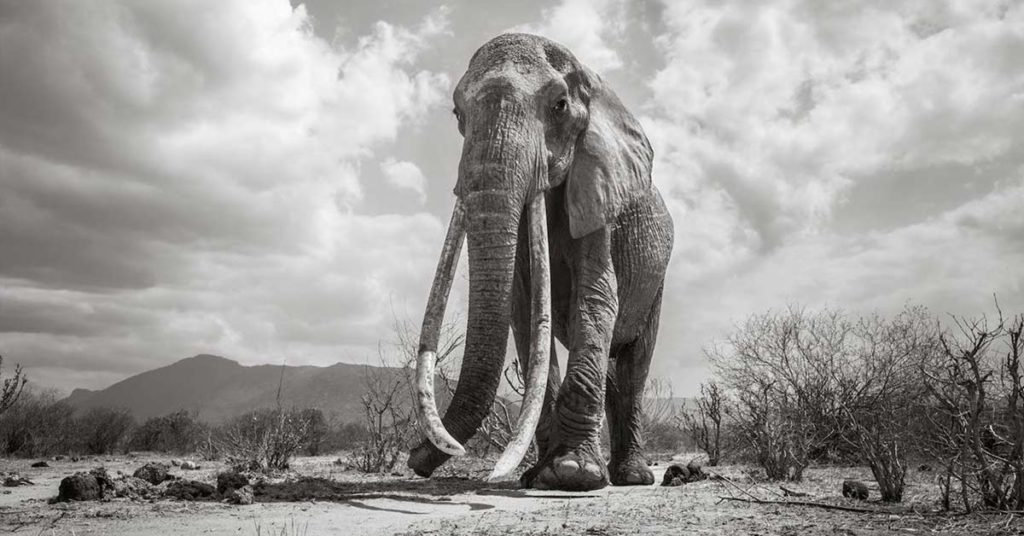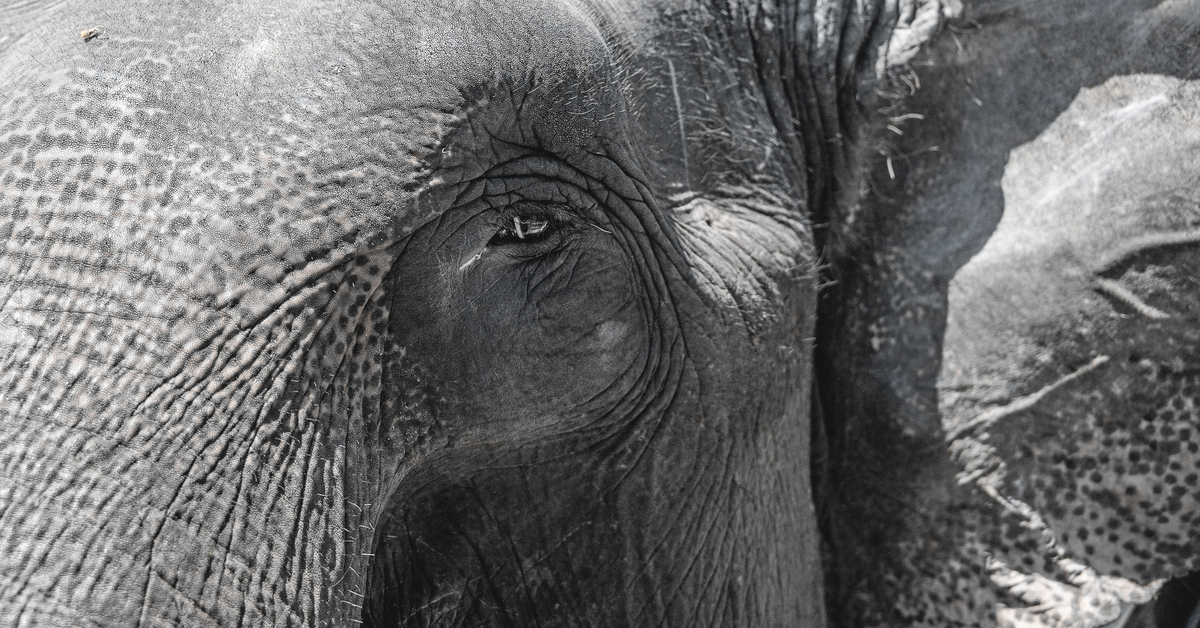One photo can truly be worth more than a thousand words. This quote aptly describes the above picture. The gentle beast in the heart-breaking photo represents all of her kind and all other species that we have failed as humans. The insatiable thirst for illegal wealth has upset the peaceful existence between us and nature’s beautiful creatures, and, sadly, an entire species has to decline so massively due to the human influence of poaching.
Fittingly dubbed “The Elephant Queen” by the photographer, F_MU1 was a true beauty to behold. With her majestic size and long tusks, she had a story to tell that would remain timeless for ages beyond her passing.
In February 2019, photographer Will Burrard-Lucas captured the iconic last moments of the 60-year-old tusker elephant. [1] She had spent her entire life in the Tsavo region of Kenya, East Africa. Like Burrard-Lucas, your heart is warmed to know that she died of natural causes at a ripe old age. Many of her brothers and sisters would, unfortunately, have some horrifying stories to tell about their deaths.
The elephant is ‘ripe’ considering that African bush elephants have an average lifespan of 60–70 years while their Asian counterparts live for an average of 48 years.
Her passing would have been a lot more painful if she were gunned down by a snare, bullet, or a poisoned arrow of a poacher, a terrible fate suffered by an estimated 100 African elephants per day. [2] The same fate was suffered by her F_MU1’s 50-year-old ancestor two years earlier.
The fact that they are such intelligent and empathetic creatures would probably break your heart even further.
Last memories

Burrard-Lucas has gained global fame for an impressive ability to sight and photograph many exotic rare and endangered species. When he set out to Tsavo, Kenya, he went to the region expectant and patient. The skilled photographer joined hands with the Tsavo Trust and Kenya Wildlife service to search for The Elephant Queen.
Burrard-Lucas and his team utilized a car, a spotter plane, and a specialized remote-controlled camera which he developed himself to find her. The search took many days but he was rewarded in the end with some of the most stunning elephant photos ever.
For Burrard-Lucas, the experience may as well be described as magical. He has been quoted as saying that if there were to be an elephant queen, it would have been F_MU1.
Mark Jones from the Born Free Wildlife Charity reports that super tuskers are very rare these days, precisely because their big tusks make them prime targets for trophy’ hunters.
He goes on to add that the remaining ones could very well be the last of them. Their genes are fizzling out because they are usually clamped in the peak of their reproductive lives.
A fallen giant

Read: The Gorillas in This Selfie Want to Be Just as Cool as the Man Who Protects Them
Elephants are famed for their excellent memories. It is said that they never forget. This is due to their much larger and denser temporal areas. It is ironically sad that they will soon be a forgotten species. If humans are left uncontrolled, new-age children will hear of but never see and experience the majesty of elephants.
Only about 400,000 African elephants remain in the world. Their Asian cousins have fared much worse and are now fully endangered. They remain about 40,000 worldwide.
Due to their impressive long ivory tusks, tusker elephants have been reduced to a population of less than 30 on the planet, an entire subspecies on the verge of extinction. [2] This breed of land beasts (beauties) is called big tuckers because as they grow older, their tusks become long enough to graze the ground.

Sadly, the ivory-hungry infamous poachers engaging in a globally illegal trade have eliminated many tuskers for the pricey ivory. This is a menace that has eaten a little too deeply into the fabric of Asian and African societies. Although illegal and evil, poaching has continued its relentless activities due to a bustling ornament black market. The “lucky” ones that are not immediately killed are sold to zoos and entertainment centers where they are often treated very poorly.
Religion, ignorance, and poverty also make a most unfavorable combination.
Humans are largely to blame for the dwindling population of the largest creatures on land. Numbers have dropped by a shocking 62% in the last decade. [3] Other animals are not spared from human-inspired destruction but elephants are particularly vulnerable for their highly-valued ivory, meat, and skin.
Moves to Heal

We obviously need to stop the poachers and save the elephants! What can you do to help? Create awareness. Lend a hand. Share, care, donate, report, volunteer, and choose eco-friendly ornaments. Stricter conservation practices and stronger anti-poaching laws are imperative.
All hands must be on deck to save these animals.
Keep Reading: Herd Of Elephants Tramples And Kills Suspected Poacher In South Africa
Sources
- ” Last photos of Kenya’s ‘elephant queen’. BBC. Retrieved September 28, 2020.
- “Incredible pictures capture rare ‘Elephant Queen’ in Kenya.” CNN. Francesca Street. Retrieved September 28, 2020.
- “TOP 10 FACTS ABOUT ELEPHANTS.” WWF. Retrieved September 28, 2020.
This article originally appeared on Family Life Goals in October 2020 and has been published here with permission
Lead image credit: Shutterstock

